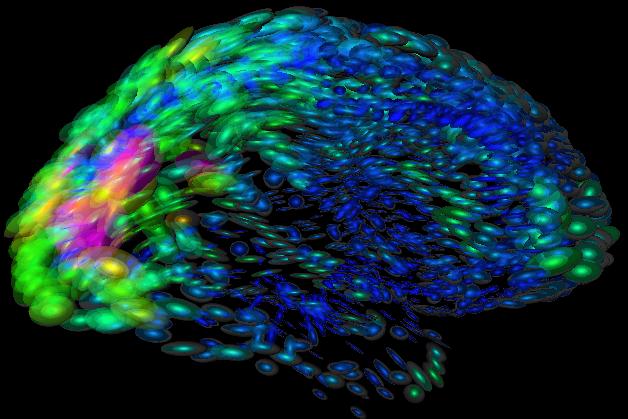Arthur W. Toga and Paul M. Thompson
Laboratory of Neuro Imaging, Department of Neurology, Division of Brain Mapping, UCLA School of Medicine, Los Angeles, California 90095
[Full Article: (Without Figures; .pdf 164K) ]

Image registration is a key step in a great variety of biomedical imaging applications. It provides the ability to geometrically align one dataset with another, and is a prerequisite for all imaging applications that compare datasets across subjects, imaging modalities, or time. Registration algorithms also enable the pooling and comparison of experimental findings across laboratories, the construction of population-based brain atlases, and the creation of systems to detect group patterns in structural and functional imaging data. We review the major types of registration approaches used in brain imaging today. We focus on their conceptual basis, the underlying mathematics, and their strengths and weaknesses in different contexts. We describe the major goals of registration, including data fusion, quantification of change, automated image segmentation and labeling, shape measurement, and pathology detection. We indicate that registration algorithms have great potential when used in conjunction with a digital brain atlas, which acts as a reference system in which brain images can be compared for statistical analysis. The resulting armory of registration approaches is fundamental to medical image analysis, and in a brain mapping context provides a means to elucidate clinical, demographic, or functional trends in the anatomy or physiology of the brain.
Article Summary.
Image registration is a prerequisite to numerous imaging applications in the neurosciences. Registration is required for three dimensional reconstruction, multimodality image mappings, atlas construction and arithmetic operations such as image averaging, subtraction and correlation. Physical sectioning procedures, unlike various tomographic imaging techniques, also require additional superpositioning schemes to register serial sections. Since the mid-1980's investigators have used several approaches, with varying degrees of manual interaction, to perform image registration. These approaches use either information obtained about the shape and topology of objects in the image, or the presumed consistency in the intensity information from one slice to its immediate neighbor, or from one brain or image set to another.
Registration algorithms have a powerful range of applications when used in conjunction with a brain atlas. Digital atlases of the brain, which represent anatomy in a 3-dimensional coordinate system, are fundamental in brain mapping. Atlases define the brain's spatial characteristics: where is a given structure; relative to what other features; what are its shape and characteristics and how do we refer to it? Where is this region of functional activation? How different is this brain compared with a normal database? Registration of image data to a population-based brain atlas allows us to answer these and related questions quantitatively.
To obtain a reprint of this paper, please send me an e-mail, and I'll be happy to send you a copy!
Key Words: Brain Mapping, 3D, image registration, deformable templates, elastic matching, Magnetic Resonance Imaging
Paul Thompson
| RESUME| E-MAIL ME| PERSONAL HOMEPAGE| PROJECTS |
|---|